
Queering healthcare
The Startup Fighting To Eliminate LGBTQIA+ Health Disparities
Building out a company that redefines health and wellness for the queer community.
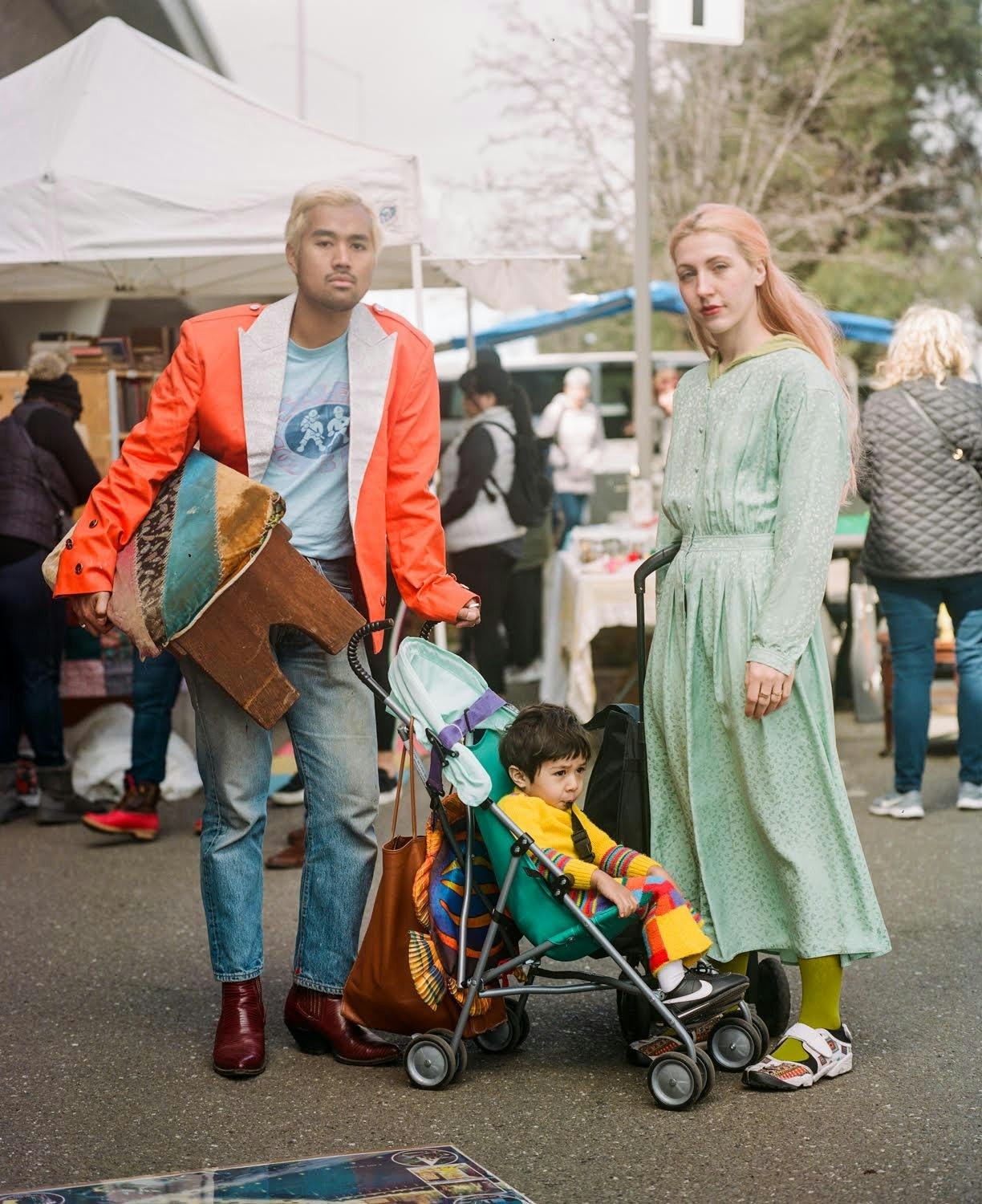
Connecting cultural identities, and reinventing secondhand
Thai-U.S. duo Nong Rak (aka Young Love) shares their avant vision for sustainable vintage with the states.
Vintage is at a turning point.
Rare, thrifted clothing with materials and designs from past eras is not likely to go out of style, ever. But something’s distinctly different and worth noting about vintage’s role in the now: namely, the conversations our society is having about sustainability, consumption, and how the buying choices we make can shape businesses and economies. In an increasingly social world where ideas can be harnessed and channeled into movements, slow fashion has been picking up rapid steam since 2017—an ever-appealing alternative to the “I’m willing to stand in line for 6 hours for rare sneakers,” “I can’t be seen wearing this same outfit all the time,” world of haute couture. Indeed, while the high fashion market continues to grow and is deservedly celebrated for its creativity, it is also increasingly critiqued for its inaccessibility.
Enter Nong Rak, aka “Young Love.” Cherry W. Rain-Phuangfueang, born in Tempe, AZ, met her husband, musician and photographer Home Phuangfueang, in his hometown of Bangkok, Thailand while spending time there as an au pair and squeezing the last out of her visas. The singular merging of artistic cultures that ensued manifested itself in both the birth of their child Casper, and Nong Rak: a mystical vision of craft, family, romance, and folktales that is equal parts an open-ended artistic adventure, and a reimagining of what vintage clothing is capable of.

How did you meet? Tell us about the genesis of your creative relationship.
Cherry: Nong Rak, as a vintage shop, will always be secondary to Nong Rak as an ever-changing, collective outlet for creating, and everything that can stem from that. There were so many beginnings and small moments that collided and led us here. Our individual stories are cumulatively the reason Nong Rak ever began in the first place and the most vital contribution to what we create together. It’s a marvelous thing to look at any adult, imagine them as a child, and think of how enormously that influences what they do throughout their lives.
I spent my adolescence as a seriously lonely, only child of nearly-teenage parents. My mother used to be a trying photographer, and I would spend the summers with my father in Arizona. At the time, he was a punk-rock musician and aspiring chef, always bringing me to Asian markets on his handlebars. Now that I think of it, that nostalgic smell of star anise and fish sauce is likely the reason why I ended up in Thailand so many years later. I was, and still am, hopelessly in love with Japan, and after backpacking through at 21, while doing artist residencies for illustration, I tapped out my traveler's visas and found myself with an offer to become an au pair [as a nanny and language tutor] in Bangkok.
Home grew up as a ‘football’-loving, uniformed schoolboy, in a tight-knit family, and has the warmest memories of his childhood. With next to nothing, his mother and father came to Bangkok, separately, from different parts of the country. After Home and his sister were born, they all lived in a shoebox of a traditional Thai shophouse, where his mom did hairdressing on the ground floor. He was invited into a gang in high school because the other members liked his ability to play music, and he was coined the ‘gentle, non-violent one.’ For a time, he was practicing to become a photorealist artist, but ended up studying graphic design and illustration in university.
Having already been living alone in Bangkok for a year, I had become insatiably obsessed with hunting vintage clothing around the city. So like clockwork, every Sunday night I would go to search at Jatujak Green, a famous night market at the time which Home frequented for the live music. Then there was that fateful night he saw me walking, and we met. It’s funny to think of how many times we’d probably passed each other before that night.
Home started dabbling in photography a few weeks after we began dating. He was working on his thesis, which was centered around the idea of corruption and materialism in modern organized Thai Buddhism. We created countless collages of Thai imagery, and spent those first months adventuring around the city, high on young love, photographing shrines, cultural sites, and other events of interest.
We had a faux-band called ‘Palm Chick,’ which was an experimental, super low-fi project that only released one admittedly pretty bad EP, and that was the moment we realized working together was concretely in our future.
We lived and created out of an economy studio in a likely haunted building, and saved up to travel through Turkey, where east meets west. One day, the bus we were riding passed a small shop called ‘Unisex Genesis,’ and those words hit us both so deeply that we still talk about them today. Perhaps that was the true genesis of it all, as we got engaged on that trip and pregnant in the months to come, subsequently ending up in the US, which, after so many more wonderfully influential moments, led us to now.
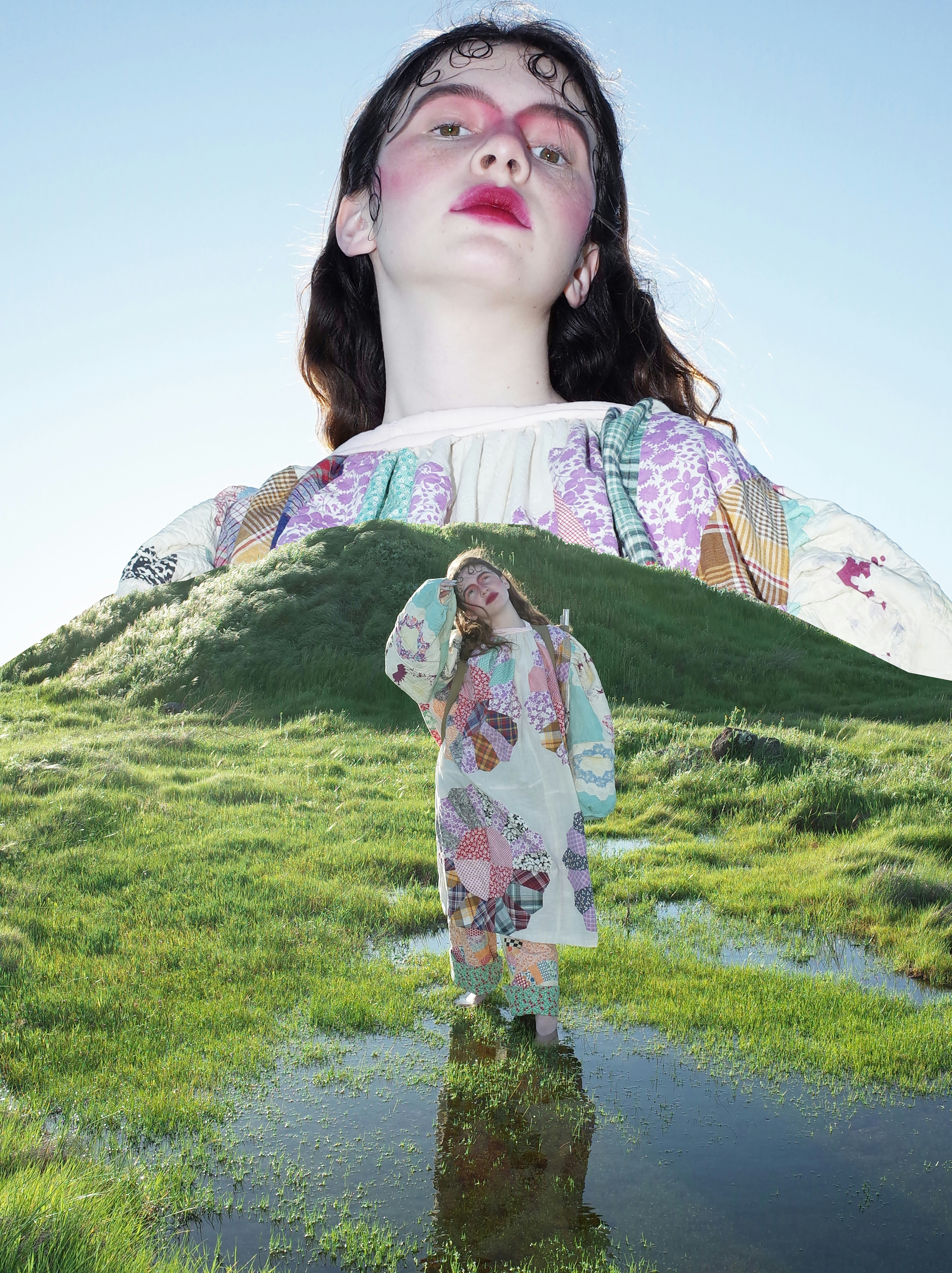
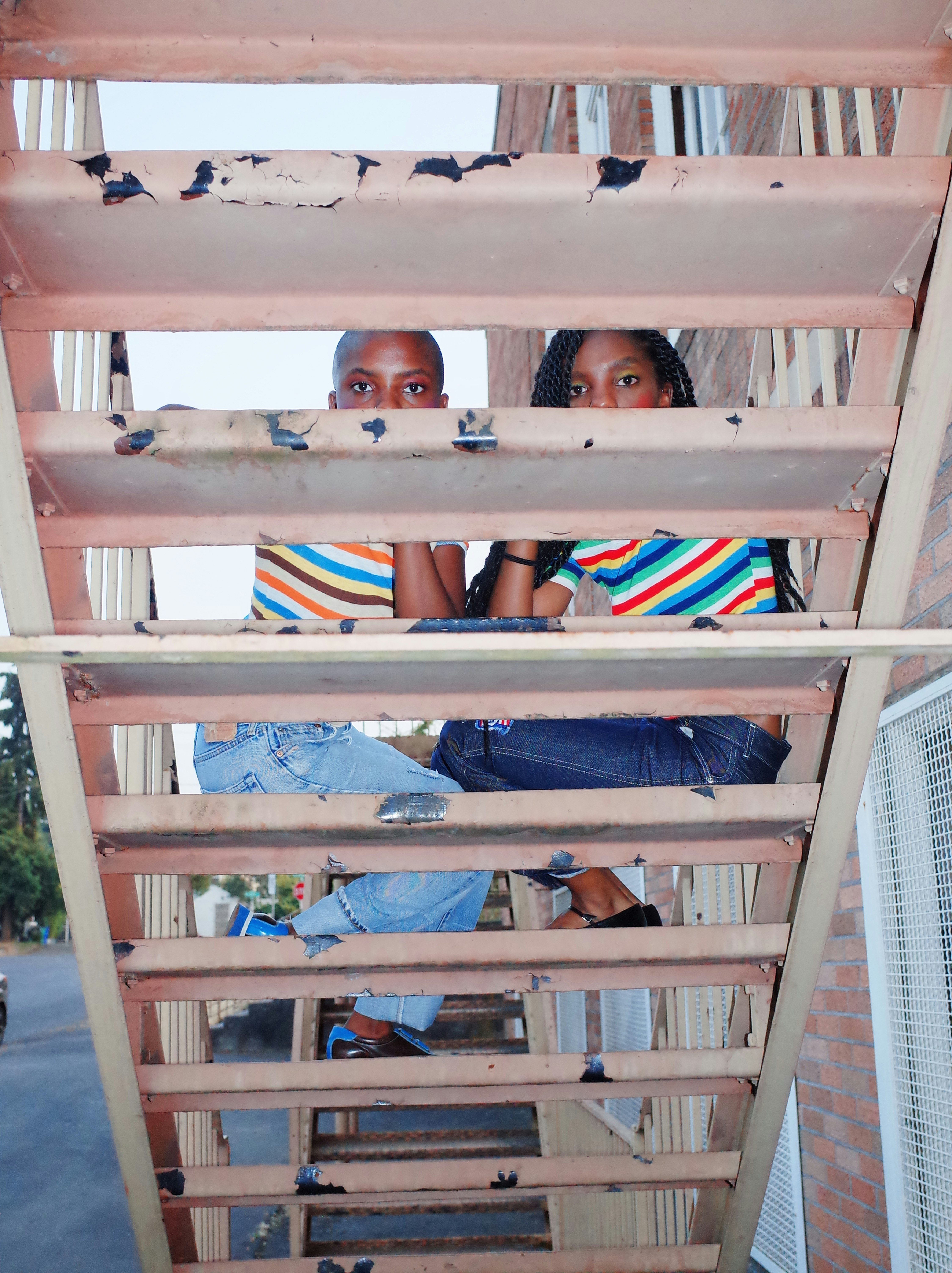
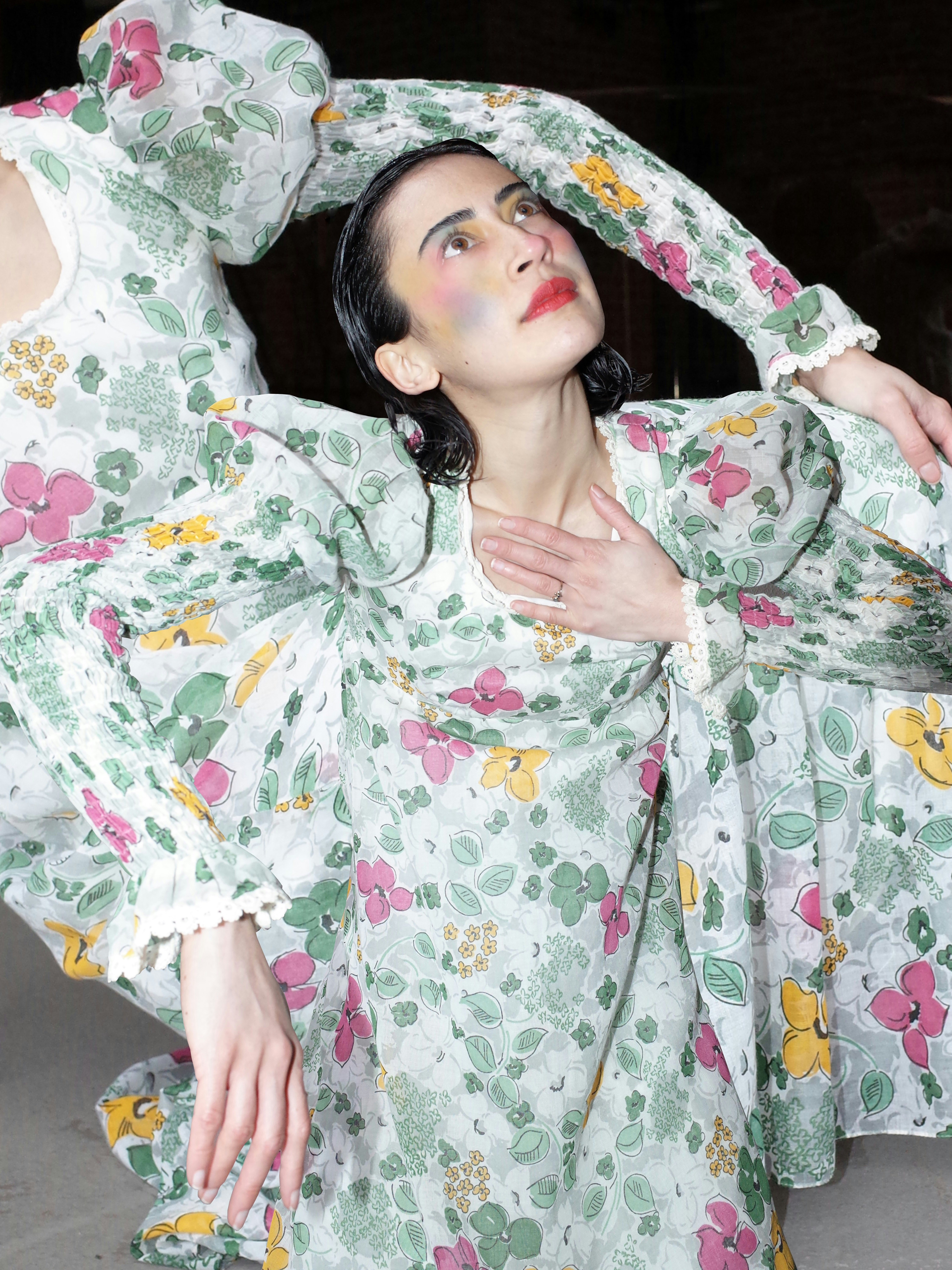
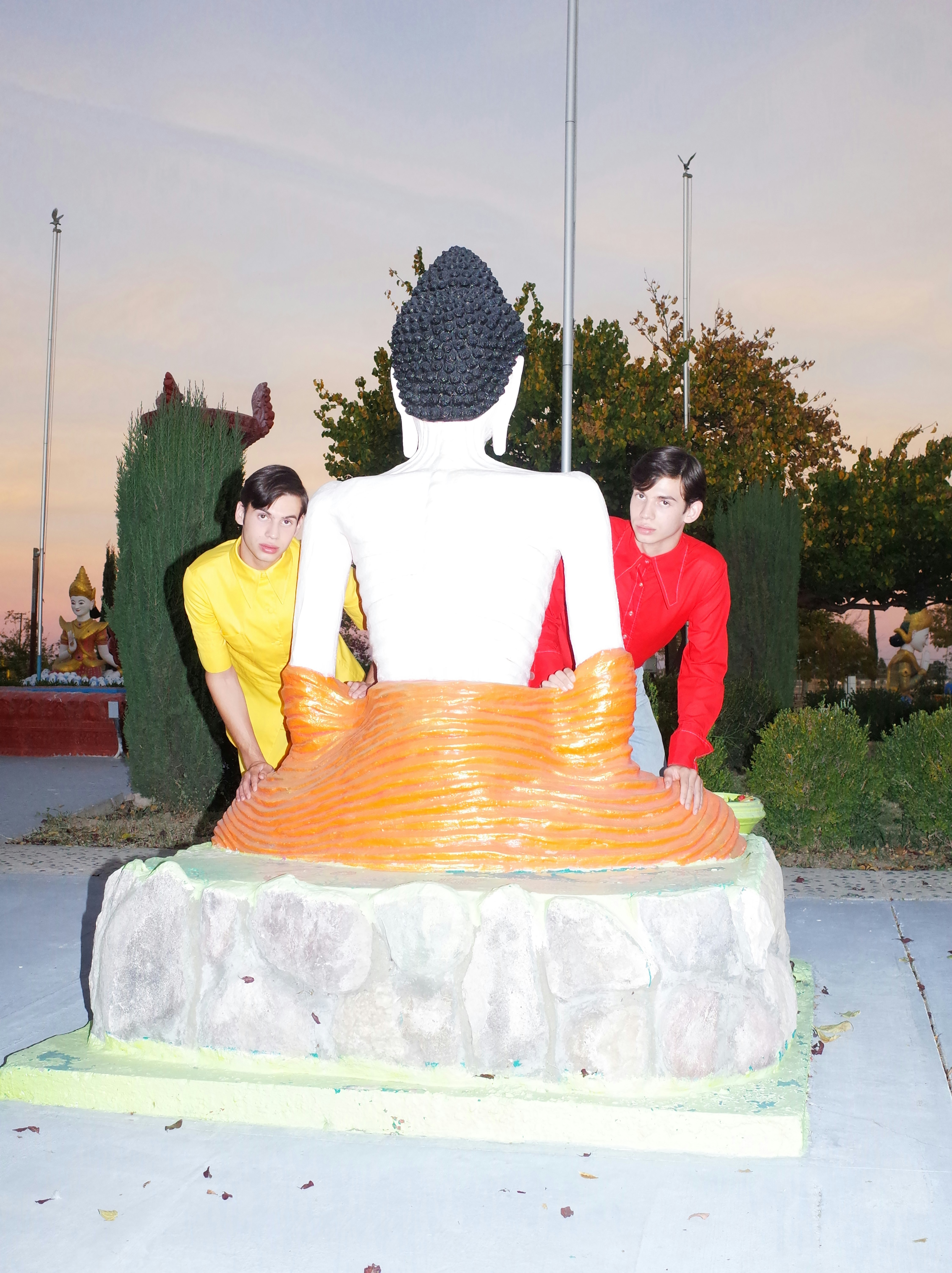
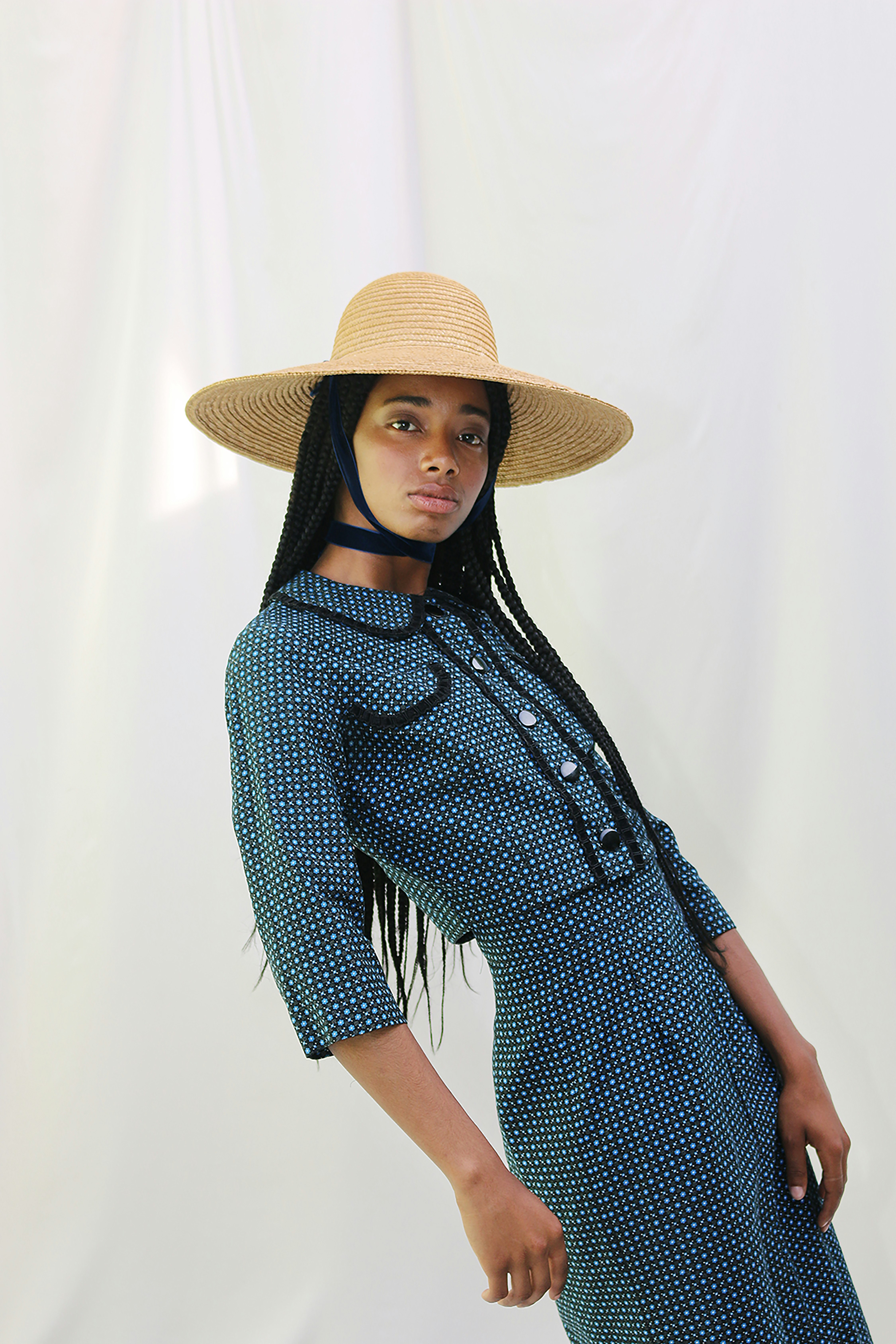
What’s the motivation behind Nong Rak?
The idea that style can’t exist without personality, fashion is absolutely nothing without diversity, and what you wear doesn’t define you—but that you will define what you wear, and how others perceive you.
How we dress ourselves is an irreplaceable outlet for self-expression, and that expression seeps into creativity and art. It digs itself deep into society, since self-expression is such a fundamental motivation of humanity. It’s a powerful tool that can be honest or manipulated, straightforward or questionable, but inevitably will always filled with an array of relatable emotions.
How does Thai culture and history tie in to your products and approach to design?
We are both haunted by the spirit of Bangkok, and our individual and collective yearning to return. Thailand is overflowing with life, and with that comes such a unique culture with endless depths. There is a bright idea in every sight, sound and smell. It’s something that many countries have in common, but for us, a lot of the US is practically devoid of it. Our time spent separately and together, in not just Thailand but also other parts of the world, breathes itself into Nong Rak every day. Colors, music, art, crafts, celebrations, folktales, religions, relationships, romance, community, all of it. Nong Rak is constantly striving for cultural stimulation in any form, and it’s from that which everything else flows easily.
Do you see your work as being a response to social and creative values in Thailand or America? How do the contrasting aesthetics merge in your work?
America is this fiercely independent country, founded on the idea of the individual, while Thailand is, like much of Asia, more passive, placing high importance on community, family, and the collective voice. We try to bring all of it together as cohesively as we can in some of our more creative work, but it’s a constant evolution trying to balance the two since they are polar opposites.
I have a love for certain Americana—quilts, the atomic household, canned food, and train tracks, but as a person who was raised absorbing the cultures of others, I got seriously lost in that melting pot mentality. After Home and I met, and I saw him embracing and using his culture to create, I was completely moved and I started to question what American aesthetic actually is, since the majority of it roots from other cultures that were forced to assimilate. As a result of that, we try so hard to create a space where everything can happen, but where simultaneously each participant can feel free to be themselves, be their roots, or to play with a completely different expression. We are incredibly lucky to work with people from many backgrounds, and it's always our intention for Nong Rak to be a place for the shining, authentic self, and all the histories and cultures that comes with that.
Now that we will be in New York City, where there is an impressive Thai community, we plan on finally being able to include more Thai individuals and personality into our future projects, and we are looking forward to seeing how it manifests and changes Nong Rak.
Home, did you grow up and live in Bangkok this whole time before heading to America? What has your experience been like in America?
Home: I grew up in the same house in Bangkok until I went to university. I miss Bangkok everyday. I'm not sure if I like America very much, as I think people can sometimes be too harsh and strong in their opinions, which is very different than in Thailand, where we are taught that keeping peace is the most important thing for the community. I have met so many people who have really inspired me and changed the way I see everything. School in Thailand teaches us so little about the outside world, and I think my time in America has taught me not just about the US but also many other cultures of the world.
We have spent most of our time since coming to the US in Portland, and I can say I really like many things about it. I got really lucky to work for a screen printing shop there, and one of the owners is Thai, but was raised in the US. She and her husband (who is American) showed me so many new things about America, and introduced me to a few different scenes in the city.
In Thailand there is an open queer and transgender community, but I have seen a very different, progressive side of that in America. I spent a lot of our time in Portland photographing drag events and making friends with many people in that community, and it changed my idea of how it is in Thailand. I'm really looking forward to becoming a New York resident and being around other immigrants and people from different parts of the world, as I feel like the environment might be more friendly and open.

Home, can you tell me about your thesis?
The subject is really hard to translate to English, as it's very deep into Thai culture and history, but it was about corruption of Thai Religion, by money and wanting to buy things always, which is actually the opposite of Buddha's teachings. This subject was close to me because I could see it happening to my dad and other people close to our family. So much of daily life in Bangkok is around the idea of giving to spirits, gods, and monks, but I found myself questioning why money is still destroying people if they have done so well following Buddhist practices.
I also really enjoyed the idea of Thai amulets—my dad collects them—and how they can give special powers or luck to the people who wear them. Some people hoard them and still do not have happy lives, but it continues to be a tradition in Thailand. There are also very strange practices that I included in my thesis, which go more into 'black magic' ideas, such as people blessing dolls and treating them like children. There are many contradictions with modern religious practices in Thailand. There were many fun things about studying these subjects, and Cherry helped me to explore and find a final path to put my studies together into a book of collages, which I can see still inspire the work we do together today.
How would you describe “magic” as it pertains to Nong Rak?
Cherry: We recently adopted the sub-title ‘maha saneh (มหาเสน่ห์)’ which is a type of amulet that pertains to love, attraction, and affection. It’s generally viewed as a kind of black magic, and the words translate to ‘full of charm,’ as the wearer is expected to become. We were interested in taking these words and redefining them to connect with the magical situations that we try to create in our photographs—the magical subjects, characters within them, and simply the magic that each item holds and gives to the wearer. Each item or character can be a lucky charm for love, which is the universal need.
How do you view the current state of the vintage industry, and where do you see it headed in the future? Why should people shop vintage?
As being environmentally conscious starts to become more of an everyday conversation, people are searching for easy and simple ways to lessen their footprint, and are beginning to see the severe environmental damage caused by the big-brand fashion industry. Luckily, there are so many alternatives when it comes to clothing. Currently, the vintage industry is exploding in popularity because of this, and we feel it will only become more of a norm to shop vintage and second hand in the years to come. It seems as though a lot of people still don’t understand the monetary value of vintage, and oftentimes can’t justify the rising prices of second hand, when in reality true vintage items often hold a much higher value—historically, in quality, and in craftsmanship.
There are so many perfect reasons to shop vintage, and there is definitely a different draw from one person to the next. Its environmentally friendly factor is the most responsible reason, while vintage is also an irreplaceable way to bring the nostalgic aesthetics of the past into the digital age. It is, of course, a great way to ensure that one's closet is filled with unique, and one of a kind pieces. Vintage is an ongoing hunt, not just for us, but for our customers as well, and it’s a much more interactive, fulfilling way of shopping.
Was it difficult to get Nong Rak off the ground? What challenges brought you from concept to where you are today?
Neither of us considers Nong Rak to be ‘off the ground’ yet, and it’s been a very difficult and trying process to get to where we are.
A few months after Nong Rak began, we had the opportunity to open a brick and mortar, which was, and still is, our ultimate dream. We used our intuition to decide that it was the direction we were going to take, and [due to] our own naiveté and misplaced trust, the landowner double-crossed us. We found ourselves with a large vintage inventory than we couldn’t house, and a big business loan that we had already cut into for the suddenly impossible shop.
We were utterly broken and defeated, and it made us feel completely worthless. But from that, we grew a thicker skin and stronger determination, and ultimately had to make the difficult decision to leave our home and city. We moved in temporarily with family in California so that Nong Rak could still have a chance online. Once we started to focus on online and accumulated the screen time that comes with it, we quickly began to experience the emotional burden of social media and its perfectionist attitude, as well as the difficulty to set ourselves apart—which is so necessary in the vintage and creative worlds alike. There is no definite line between our personal life and Nong Rak, so when we feel discouraged on a business level, we subsequently feel it on a personal level, and it’s something we’re still struggling with as a family.
We are finally regaining our independence by moving to New York, and although we will still have to work other jobs to continue to raise Nong Rak, we can clearly see those past situations' influence what Nong Rak is today, and we are relentlessly determined to keep working towards what it is we love to do.
Your content and styling directions are astonishing, like nothing else I’ve ever seen. But they retain a spirit of spontaneity and not taking yourself wildly seriously. Can you walk us through your creative process?
Our creative process is complete chaos. We are truly all over the place. Sometimes it works and sometimes it doesn’t, but it’s always changing. Sometimes we are inspired by a particular item or location, but more often than not, by people we are planning to style and photograph. Oftentimes we’ll make a rough plan for the shots we’d like to get, but generally, we end up shooting guerrilla style. Then comes the editing, which we usually do together, and the end result is almost never preconceived. We definitely don’t like to take ourselves too seriously, and are constantly embracing the idea of never ending learning and development.
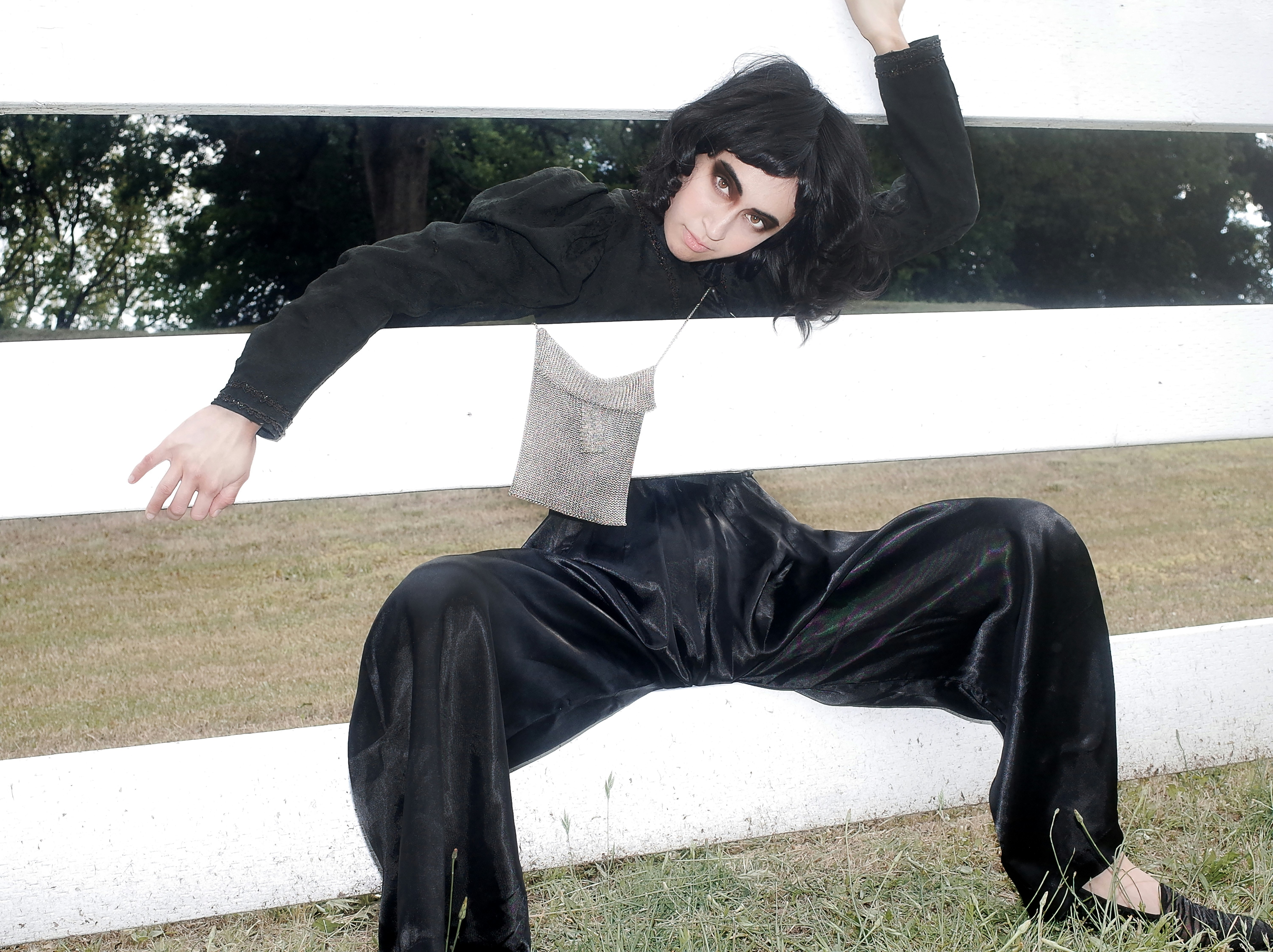
Tell us about your upcoming collection of garments that are designed by Nong Rak. How are they made, and do you want to expand on that?
Much like our creative process, the planning and execution of our designs is totally unorganized, but we are always endlessly eager to share them. Most of our fabrics and textiles only have enough for one or two pieces, as each piece is sourced vintage.
Home is an incredible partner in every aspect—conversing about themes, cutting patterns, modeling, counseling, comforting, and encouraging. I do the sketches, calculations, pattern making, and ultimately the sewing, but I am still teaching myself these things and there is huge margin of error. It's really fulfilling when something comes together nicely, as we never really know what the end result will be when we begin.
This summer will be our first time attempting a cohesive collection, and all the items will be limited run and one of a kind. There will of course be, as requested, some more of our designs made from vintage quilts, which are seriously influenced by the jackets made of crazy quilts in the 1930's and then revived in the 1960's and 1970's with more coats, pants, and dresses. We will also be branching out into more unisex shapes and styles in various vintage dead stock and antique fabrics. It's also one of our biggest goals to start shoemaking, and are hoping to start wrapping our heads around that as soon as humanly possible.
Where do you see Nong Rak a year down the road? What does success look like for you?
Online is an expansive tool that has been so valuable to Nong Rak thus far, and it's the sole connection we’ve had with our lovely customers and audiences, but it craves human interaction. After having to seriously postpone even talking about the idea of a brick and mortar, we have been on the hunt for markets to regularly participate in. With the exponentially growing vintage industry, and the exclusivity within that, it’s very difficult to get accepted into markets as a new shop, but we are always searching, and have very high hopes for that this year. In addition, we are trying to find more time to focus on our own garment designs, in which have had an unexpected influx in customer interest, but not enough time or space to produce.
We both are indescribably excited, a little uneasy, and extremely curious to see what is coming, as for us success looks like making a livable wage from the countless hours of blood, sweat, and tears that go into running Nong Rak, while making as many friends and magical experiences as we can along the way. For us, success is raising our child in an empathetic environment that always welcomes creative thinking, with parents who he can admire and will show him the endless possibilities that exist, and who will lead him into adulthood knowing that following one’s heart is the only path there is.

Are you willing to reduce your environmental impact by shopping vintage?
Join the conversation on Supermaker's Twitter!
-Chris Cantino, Supermaker Co-Founder